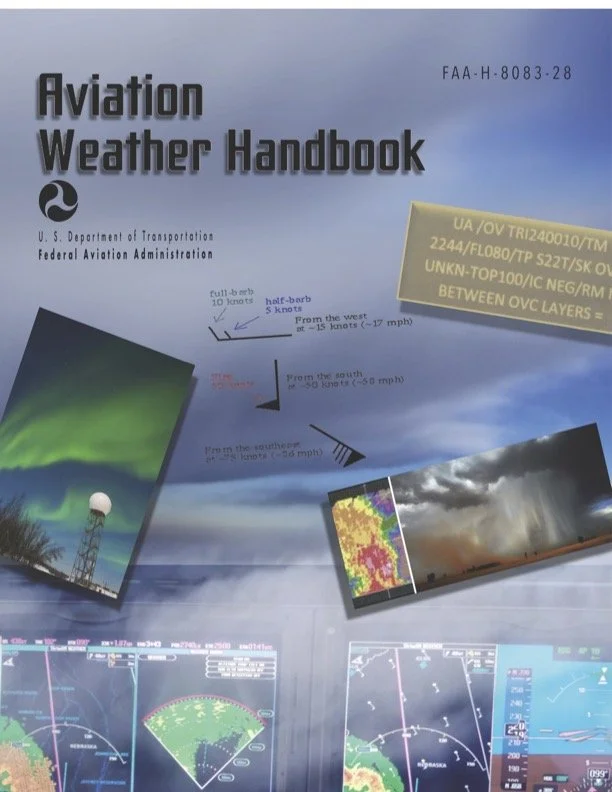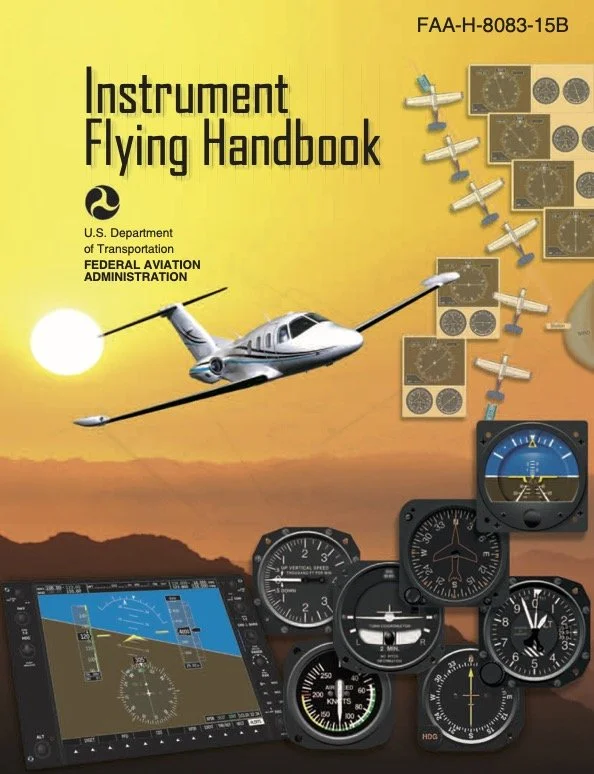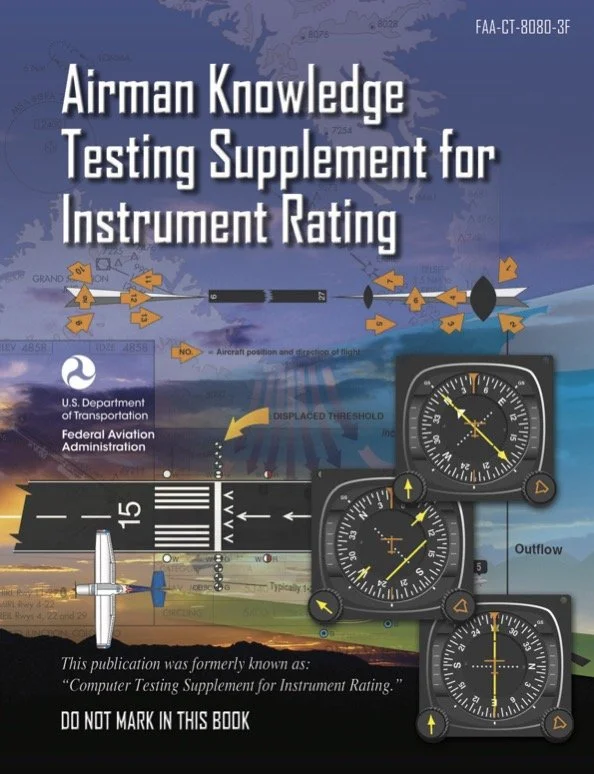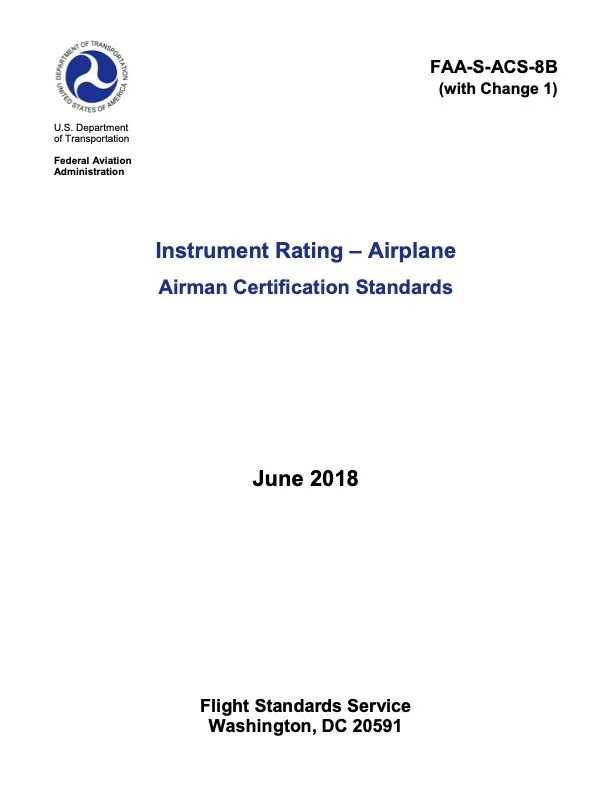Essential Books for Flight Training
Airplane Flying Handbook
The AFH is the first of three key resources that you’ll want to put eyes on before you begin your flight training. You will continue to use this resource throughout all phases of your flight training but it is especially useful for gaining an understanding of the flight maneuvers you’ll be expected to perform as you progress.
Pilot’s Handbook of Aeronautical Knowledge
The PHAK can be thought of as the “ground training” counterpart to the AFH. Among many other subjects, the PHAK covers basic aerodynamics, aircraft systems, and weather theory - all of which the Private Pilot will need to have an understanding of before earning their certificate.
Aeronautical Information Manual
The AIM provides almost everything a pilot should know about safely operating an aircraft. You’ll dive into this publication when it’s time to learn details about airspace, air traffic control procedures and communications, safety of flight topics emphasized by the FAA, etc. It will be continuously used as a reference throughout your training so make sure you keep it close by and up-to-date.
FAR/AIM
The Code of Federal Regulations, specifically the Federal Aviation Regulations (FAR) are the laws a pilot is required to abide by from the moment they apply for their Student Pilot Certificate. Within its pages you will find exactly what is required for you to earn your certificates and ratings… and also how to lose them. Make sure you take full advantage of your qualified and competent authorized flight instructor as you begin to decipher the regulations. The FAR is available for free from the FAA website but this one we recommend purchasing either in print or digital format and paired with the AIM.
Aviation Weather Handbook
New for 2023 all weather information from the FAA has been consolidated into a single handbook! The Aviation Weather Handbook streamlines access to the FAA’s weather documentation for users of the National Airspace System (NAS) and will be your one-stop shop for all things weather as you begin your aviation career.
Airmen Knowledge Testing Supplement - Private Pilot
When you go in to take your FAA written exam, you will be provided with a supplement book containing all of the figures and charts you’ll need to reference to answer certain questions. This supplement is readily available from the FAA - Read it! At least five answers from your test can be found right there in Appendix 1 and so many applicants overlook this ever valuable section of the book, usually becasue they don’t know it’s there.
Airmen Certification Standards - Private Pilot
The final exam is right around the corner: an extensive oral to confirm you have developed a comprehensive understanding of all aspects of aviation knowledge followed by a flight test to verify you have the proficiency and pilot in command skills to handle an airplane by yourself, in any situation. And here are ALL of the tasks and skills that will be asked of you on that test! A pilot should read the ACS for their specific Practical Exam cover to cover, maybe several times, before going to checkride. Go through it page by page with your instructor, identify any weaknesses you may have, and by the time you meet with your DPE for the exam, it will be a mere formality.
Books for Adding an Instrument Rating
Instrument Flying Handbook
The IFH is one of two key resources that you’ll use as you quest toward your Instrument Rating. Much of this material will be clarified and reviewed with an authorized flight instructor but since you dabbled in IFR during your Private Pilot training (remember the hood work?) you should be able to make sense of a lot of this material early on.
*Note: The FAA has changed their website layout so when you click the link below, you will have to scroll down to the “Instrument Flying Handbook” link on their page for the download. Make sure you check out the errata and addendum pages as well as these often include important changes.
Instrument Procedures Handbook
Flying under Instrument Flight Rules (IFR) is all about procedure. The IPH outlines everything a pilot needs to know as to how to operate within the IFR system. After reading this handbook and applying this knowledge with your authorized instructor, you’ll understand how to depart an airport, climb to a cruising altitude, follow waypoints to your destination, and arrive at a completely new airport safely and efficiently… all while barely being able to see your propeller in front of you.
Aeronautical Information Manual
The AIM once again proves to be an invaluable resource for safely operating an aircraft, this time under IFR. You will refer to Chapters 4 and 5 frequently to find clarification about ATC Communication and Procedures and you’ll spend a good bit of time in Chapter 1 as you decipher the complex world of GPS navigation. Eat it up!
FAR/AIM
The FAR makes a comeback for your Insturment Rating but you’re such a pro by now, the Regs for IFR will seem easy. Recall 91.103 always and forever then add 91.167-91.187 to your bedtime reading list and you’re golden. Always be sure to review the Regs with your authorized flight instructor as they can be confusing to read and understand properly. The FAR if available for free from the FAA website but this one we recommend purchasing either in print or digital format and paired with the AIM.
Airmen Knowledge Testing Supplement for Instrument Rating
When you go in to take your FAA written exam, you will be provided with a supplement book containing all of the figures and charts you’ll need to reference to answer certain questions. This supplement is readily available from the FAA - Read it! Several answers from your test can be found just by knowing your way around the testing supplement.
*Note: The FAA has changed their website layout so when you click the link below, you will have to scroll down to the “Other Airman Standards” section then click the “Airman Knowledge Testing Supplement for Instrument Rating” link on their page for the download.
Airmen Certification Standards - Instrument Rating Airplane













